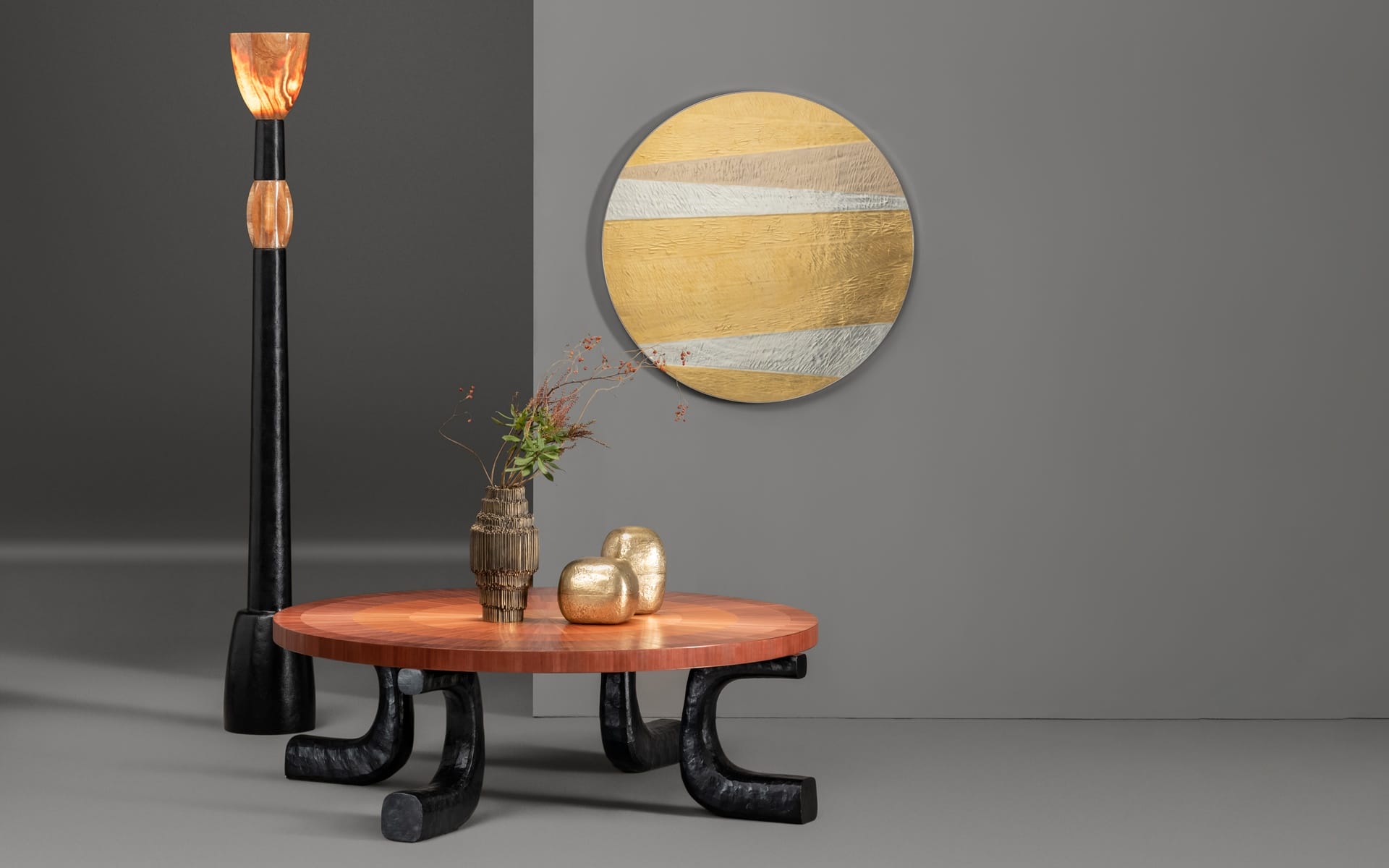How Alexander Lamont Brings His Seductive Designs to Life
The Bangkok designer’s latest collection, Sirena, utilizes everything from charred eggshells to iridescent beetle wings

Designer Alexander Lamont’s practice is all about revealing the soul of natural materials through extraordinary craftsmanship. His Bangkok workshop of over 100 dedicated artisans transforms shagreen, parchment, straw, and even lustrous metals like gold leaf and bronze to bring his seductive designs to life.
For his latest collection, Sirena, Lamont collaborated with Brazilian talent Antonio da Motta. “We started with a mood board that drew inspiration from sculptural forms and ideas of power within objects,” he recalls. The Êres dining table, for instance, was born as an homage to the twin gods of West Africa’s Yoruba tribe. The piece features larch wood, smoked oak, and brass, and wedged between the legs are ovoids sheathed in charred eggshell. The wings of a Thai scarab beetle, meanwhile, lend an incredible iridescent quality to a pair of bronze sconces. “The surface effect is impossible to create synthetically,” says Lamont. “Scarabs have short life spans, but the carapace can last for decades or even centuries.”
Read the full interview below:



Galerie: How did the collaboration with Antonio da Motta come about?
Alexander Lamont: Antonio had worked closely with our New York partner and loved our materials so Angela Brown introduced us. As Creative Director, I want to bring fresh, sophisticated designs to the materials we have mastered. Antonio brings a Brazilian eye alongside the many years working in luxury interiors with Bill Sofield, Holly Hunt, and beyond.

What are some of the most important symbols in Sirena and what are you trying to express?
In Sirena I wanted to animate designs with energy and ideas of power. Sirena started with a mood board that drew inspiration from sculptural textures and forms and ideas of power within objects. The ideas drew from details and surfaces of such objects as the fetish; the mask; the figure, but also, the energy imbued by hand-craftsmanship into an object—the hours of concentrated skilled work that go into making and creating using fine natural materials compared with industrial products and synthetic materials.
The Alexander Lamont workshops are a crucible of so much detailed work. Furniture and surfaces are made that literally express the people that made them. Natural urushi lacquer is applied differently by different people. Everyone has a different ‘hand’ when applying eggshell. When we talk about power in objects, this is a real, felt and observable aspect that gives energy to a piece.

Why did you want to incorporate delicate materials like scarab wings and eggshells?
I want to work with materials that carry their own character and beauty, and transform them with craftsmanship. Scarab wings and eggshell are in fact made by nature to be tough, protective exteriors for certain jobs they have to do in the natural world. Scarab wings have the added function of attracting mates through their incredible iridescence—a surface totally impossible to create synthetically.
Scarabs have short lifespans in the rice fields of Thailand, but the carapace lasts for decades or centuries, as can be seen on textiles of the Victorian era or Japanese altars. Eggshell was first used to create skin-tones in Japanese lacquer and becomes very strong ones applied and lacquered. Both are transformed when applied onto flat surfaces by very patient, skilled people and in the Sirena collection, both are used in the lighting and furniture using new methods that we developed in our workshop.


What is the biggest lesson from the past 20 years?
I knew this already but re-experience it every day—to make anything by hand at very high quality takes a very strong team of people. Everyone must have a total understanding of their part in making. It’s so much easier pressing the button of a machine to make something, but what you get out is the difference between a wonderfully expressive painting and a bad Xerox copy of it.

Do you have a favorite piece?
I love both the Eshù table with its hewn bronze legs and the Copula series of bronze egg lamps.

A version of this article first appeared in print in our 2020 Fall issue under the headline “Natural Wonder.” Subscribe to the magazine.
